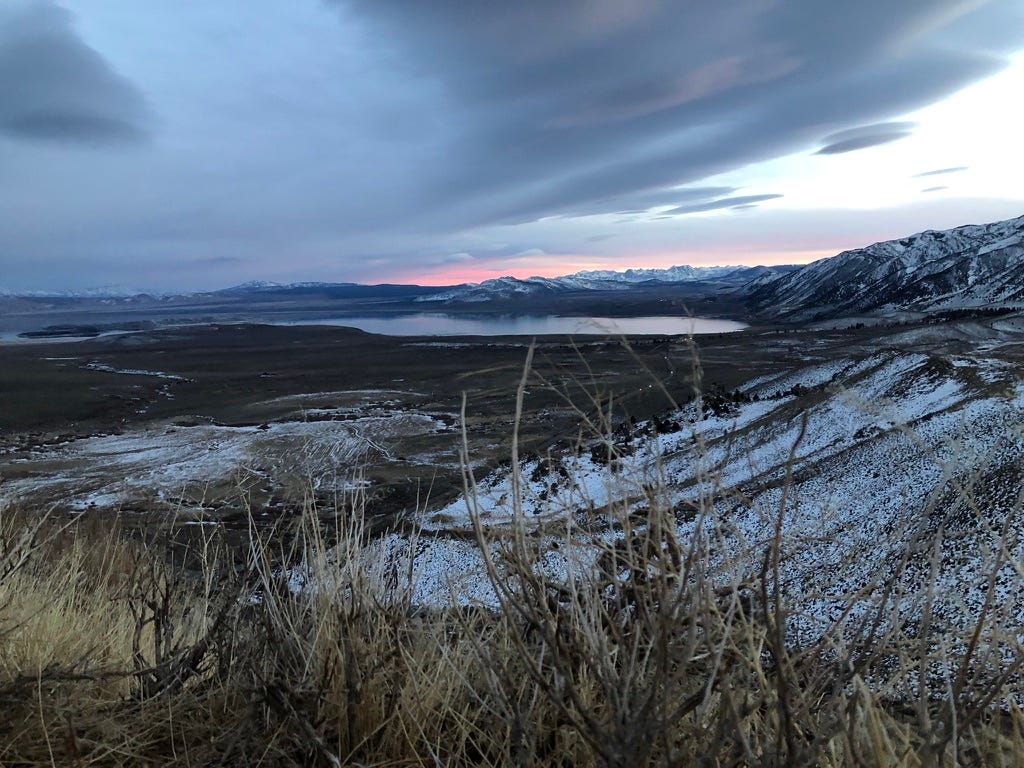Weather is everything: The NOAA firings
The water cycle is driven by weather. Understanding it hinges on public service.
Welcome to Western Water Notes. Thank you to everyone who has subscribed in the past few weeks. If you know people who might be interested in signing up, please forward this newsletter to them—or you can support this project by sharing on social media. If you can afford to, consider a paid subscription. Each subscription helps to sustain this work and make it possible to keep most of my posts free for others.
Hundreds of employees at the National Oceanic Atmospheric Administration— including workers at the National Weather Service—were laid off on Thursday.
Across the U.S., public and private-sector scientists were quick to condemn the firings. Devastating. Reckless. Dangerous. None of this is hyperbole.
As the climate scientist and communicator Daniel Swain notes, the firings at NOAA are “profoundly alarming” for an agency that costs the taxpayer only ~$3-4/year and generates a staggering return of anywhere from 10 to 1 or 100 to 1 in economic terms, while saving thousands of lives in disasters. Hurricanes. Fires. Floods. Extreme Heat.
Everything rests on weather, and more than we realize. Weather data, forecasts, and modeling are wrapped into our everyday lives in often unseen ways. This is a lesson that was reinforced early on as an environmental journalist covering dry places.
Weather data is embedded into the decisions that producers make about when and how to irrigate—it is an essential part of getting groceries to our stores and dinner tables. When there are thunderstorms in the dry summer and high winds, weather data warns us of fires. Weather data is the reason energy utilities know how much capacity they need to keep the grid going at the times of the years when costumers are most at risk—when demand for HVAC systems peak in the deep freezes of winter and the scorching heat of the summer. Weather data helps hydrologists predict flooding before it happens in major storms and runoff events. The service is a public good.
It goes without saying, but is still worth stating that weather conditions feed nearly every aspect of the water cycle. It is not always exciting and it is not always visible, ant it is certainly not political. It is just physics. Having interviewed dozens of physical scientists, I assure you most only want to talk more about the intricacies of La Niña, microphysics and evapotranspiration. They don’t want to wade into politics. They are deeply passionate people who care about providing objective, factual information.
So often I felt like the goals of science communication and journalism aligned here, because when we talk about weather data, we’re also talking about good information.
And I worry what happens when good information goes away.
We are talking about how we apply processes like evaporation and transpiration, condensation and deposition, to daily life. And in the Western U.S., we live and die by these processes. Even if we laypeople in the public cannot always see them, experts at places like the National Weather Service are watching and using the information to help us make good decisions. Our understanding of these processes is essential in preparing for things like drought, forecasting our water supplies, and understanding long-term trends about how we adapt in a region long shaped by water (scarcity).
The firings at NOAA and the weather service—along with plans to further privatize the agency—is a task the private sector cannot fill. They too rely on NOAA, Swain writes. TV forecasts. Mobile apps. Commercial weather modeling. It needs NOAA.
Josh Lappen, a smart energy historian, wrote something on Bluesky that resonated deeply with me: “The National Weather Service took more than 150 years to build. Forget flight or the internet or whatever - public-service systems like this are the marvels of the modern world. Conceptual cathedrals, constructed across generations and dedicated to the public good.” I couldn’t agree more with this statement.
Some of the most impressive marvels in our modern world are not physical ones, but system-level infrastructure that makes everyday life work, and it works so well it is often invisible to us. We may soon find out what happens when it crumbles.
Will be back next week with more…
I hope everyone has a restful weekend to recharge, and spend some time outside.
I’ll leave you with one peaceful picture from last week at Lake Berryessa.
Cheers,
Daniel









Important stuff for sure
Serious question: Don’t airlines also need data from NOAA?